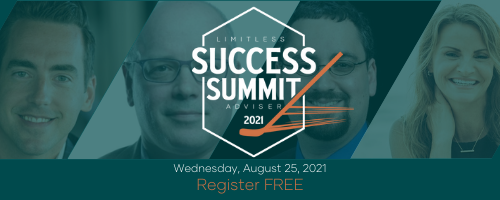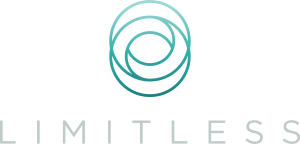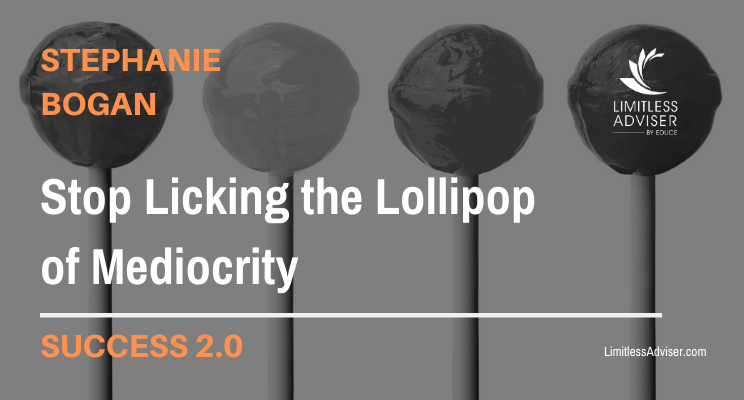When I relocated with my family to the beach in Costa Rica in April 2014 at the age of 40 at the apex of a lucrative career, I walked away from it all. You can read my story here. But what I really want to share with you is what I’ve learned in the six years since, and how it can radically accelerate your success, give you back your time and freedom and help you build a wildly successful practice and life that you love.
In addition to surf sessions and practicing the conjugation of Spanish verbs, I’ve spent six years intensely studying the science behind success and happiness. What I learned blew my mind – so much so that I un-retired in 2018 to share the science and strategies that can quickly elevate your success.
These are the same insights I’ve applied to help a $200,000 adviser grow to $500,000 in two years while making six figures and taking enough time off to get his pilot’s license. They are the same insights I’ve used to help two partners in a $1.5 million firm double their income, simplify their success and take the summer off. Indeed, those are the very same strategies that I use with my large firm and enterprise clients to help elevate their success and that of their advisers.
I don’t share this to impress you, rather to impress upon you what is possible.
The reason more advisers aren’t more successful is because they’re too busy licking from the lollipop of mediocrity. The problem is that once you lick from the lollipop of mediocrity you will suck forever.
Admittedly, this isn’t the most eloquent thing I’ve ever been quoted saying, but it is my most popular. The real question is why so many advisers settle when they know so much more is available. The answer to this question blew my mind and has the power to make 2020 your best year ever.
Some surprising science
In my quest for understanding why my own success wasn’t more satisfying, I learned that I wasn’t in charge of my success and satisfaction. You may think you’re in charge of the thoughts, feelings and behaviors that drive your decisions – and business outcomes – but science says otherwise. Cognitive neuroscientists have concluded thatonly 5-15% of our decisions, emotions, actions and behavior are conscious. By age 35, we’re essentially running pre-programmed patterns of behavior, consciously aware of only a tiny fraction of what’s taking place in our minds.
Conversations about success in the advisory profession aren’t littered with conversations about mindset, performance psychology and neuroscientific research. But I can attest to the powerful advantage it is for the advisors who put the full power of their mindset to work on their behalf.
One of the more astounding things I learned was noted in a famous study from the Carnegie Foundation, estimating that 85% of success is one’s psychology or mindset. The other 15% of success is environment and skills, both of which are important, but useless without the right thinking to apply them.
The business of your brain
The average human has 60,000 thoughts a day. Of those, 80% are negative, and 95% of those are on a constant replay loop behind the curtain of your conscious. Yes, 80% of your thoughts are happening “behind the curtain,” as I like to say.
Essentially, your brain is hardwired to focus on the problem, not the possibility; to focus on the obstacle not the opportunity. Your subconscious brain, which is running the show 95% of the time has one job: Don’t die.
The problem is that not dying is not the same as truly living.
For the doubtful among you, let me offer an example that applies to nearly every advisor: discounting of your fees. Let’s apply some mindset-mojo to reframe what’s really happening when a prospect asks you to discount your fees.
A prospect is essentially saying, “I love what you’re doing, I think it’s great. I just don’t think it’s as great as you do, so I’d like to pay less, but I’d still like you to be as happy to work with me as every other client who is paying full price.”
In what world does saying “yes” in this scenario make good business sense? Yet advisors do this very thing time and time again, all the while knowing better and feeling the cost of their compromises mount.
A peek behind the curtain
Our brains process 11,000,000 bits of information a second, but only 40 bits are processed consciously. The rest of the processing happens behind the curtain of the subconscious in 1/5th of a second. The brain simply cannot process that volume of data consciously, so it delegates to the subconscious to get the job done. The subconscious develops shortcuts early in life as a coping mechanism for the volume of information to be processed. These shortcuts are like computer code, acting as the operating instructions for how to intake, process, and respond to the world around us, quickly.
These scripts are referred to as mental models, or belief systems, which in turn drive the majority of our behavior throughout our adult life, many of which are made at the office.
The cost of compromise
If every advisor mastered their mindset and knew their value, no discounts would be given. Instead, advisors everywhere would say, “We don’t discount our fees because we’re not willing to discount the value we provide. We understand there are cheaper firms, and we won’t take it personally if you’d prefer another option. If you like our approach we can move forward with a meeting next week…”
In consulting with the founder of a $500,000 practice to up-level his brand, we made our way to a discussion of fees. By all accounts, his fees were average-to-low for the value he delivered. After discussing this in the practical sense with little progress, I finally asked what turned out to be the defining question of our work: “What is it that’s holding you back from raising your fees? What are you afraid of?” After several minutes of reflection he spoke, “What if someone says no?”
He soon came to realize that it was only limiting beliefs and fears holding him back from charging fairly for the value he delivered. In making the shift, he lost two clients and grew revenues 20%, all while treating his clients with dignity by offering them options that were fair to both parties.
Take the case of an $800,000 advisor who retained me to assess his practice and evaluate how he could best double while increasing his profitability and decreasing his days in the office.
As part of this assessment, I noted some “fee exceptions” – clients where he charged something other than his (current) standard fee schedule. When I inquired, the advisor shared that he “had made a few exceptions over the years.” I’ve been around long enough to know that “some exceptions” is code for “too many” and warranted further exploration. I conducted a fee analysis to calculate the difference between his revenue were all clients billed at the rates in the fee schedule, and the actual revenue he was collecting (including exceptions).
The net difference was $80,000 per year – 10% of revenue! That would all be profit. Add in that this advisor was 37 at the time and easily had another 20 years practicing, and that total grows to $1.6 million of cumulative revenue. If you include asset growth and compounding interest of a mere 5% annually, the loss totals to $3 million.
This wasn’t an issue of his ability to have a conversation about the fees he charged; this was an issue of his lack of confidence, causing him to compromise in ways that cost him dearly.
Say goodbye to the lollipop
A smaller advisor in my group coaching program was overwhelmed with work and underwhelmed by her profitability. She had a variety of client types and sizes, which often creates complexity for a practice, so I asked her one of my favorite questions, “Do you spend as much time as you would like with your top clients?” I ask this question at nearly every speaking event I present, and in a room of 1,000 the average is three hands raised, or 3%. This number has been consistent over the 20 years I’ve been asking the question.
I then asked my client to consider holding a new kind of client event, one that more accurately reflected the service she was delivering.
For your next client event, I told her, I’d like you to identify your top clients and place a gold star on their nametag. On the night of the event, I want you to sit one top client at each table and allow each table to fill in with the rest of your clients. When you get up to the podium to thank everyone for coming, tell the attending clients this instead of your normal speech:
Thank you for coming tonight. As you prepare to leave, instead of thanking me on your way out, instead please find the person at your table with a gold star on their nametag and thank them. It’s only fair since their fees are subsidizing your relationship with our firm.
If that stings, you’re not alone.
These practice examples are so powerful precisely because they are so common – and because it’s so easy to see the error of these ways when we re-frame the situations with a more empowered mindset.
The 7 Mindsets of Success
I’ve coached firms of every size and type through just about every situation you can imagine, and in doing so I’ve identified seven mindsets that you can master to avoid the common mistakes and compromises that silently steal our success:
- Worth: Knowing your worth, and the worth of the value you add through your work, is what allows you to face business with confidence.
- Clarity: When your vision is clear, your decisions are easy. Too often advisors take action in response to daily challenges and circumstances rather than being driven by a sense of vision and clarity around what they’re striving to achieve.
- Value: Knowing the value of the work you do and charging for that value without apology is the key to working with clients who are motivated, able to see the value, willing to pay and who will follow your advice.
- Time: None of us have a time problem, but we do have priority problems. Time is your greatest revenue producing asset and yet most advisers utterly waste it.
- Leverage: Leverage is about putting in a limited amount of energy and generating an exponentially larger result. You extract leverage when you use people, process, and platforms, not with control issues and a feeling no one can do it as well as you.
- Relationships: Our relationships with people are a key contributor to our success and happiness at work. Compromising on your staff and clients in terms of quality, capability, or fit undermines performance, productivity and profitability.
- Money: A positive money mindset is a major contributor to your financial success. Advisers who approach money with an abundance mindset make different decisions than those that operate from a scarcity mindset.
How to make 2020 your best year ever
To experience greater success and the time, income and freedom to enjoy it, I invite you to master your mindset. Doing so is the best way to make sure the tongue in your mouth and the tongue in your shoes are moving in the same direction as you enter 2020 which is the surest way I know to make it your best year ever.
Stephanie Bogan is the CEO and founder of Educe, Inc. and Limitless Adviser Coaching. Follow Stephanie on LinkedIn to access her Success 2.0 series starting November 18. Stephanie is a sought-after speaker and coach, writes the Limitless Adviser column for Investment News, authored the Power of Practice Management(Bloomberg Press), and most days can be found in her office above Iguana Surf where she enjoys the ocean view working 20-hours a week.
Published 11/21/19 on Advisor Perspectives:






